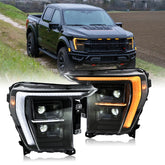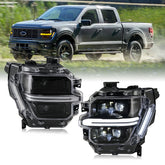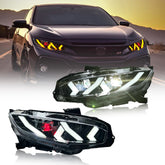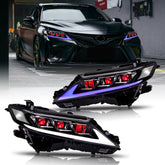Illuminating Safety Car Light Upgrades and Maintenance
Introduction to the Importance of Car Lights
Picture yourself driving down a winding road at night. Your car lights illuminate the path ahead, guiding you safely to your destination. Car lights are more than just a convenience—they're a vital safety feature that ensures visibility for both you and other drivers. Whether navigating through a foggy morning or signaling a turn, these lights play an essential role in maintaining road safety. Yet, many drivers overlook their importance until faced with a dim or malfunctioning bulb.
In this post, we'll explore the world of car lights, uncover how they work, and discuss why maintaining them should be a priority for every driver. From car enthusiasts keen on upgrades to novice drivers learning the ropes and automotive technicians ensuring peak performance, understanding car lights can make a significant difference on the road. By the end of this guide, you'll be equipped with knowledge and actionable tips to ensure your car's lights shine brightly and effectively.

Understanding the Different Types of Car Lights
When you think of car lights, headlights might be the first to come to mind. However, vehicles are equipped with a variety of lights, each serving a distinct function. Headlights are crucial for nighttime driving, providing forward illumination to see and be seen by other drivers. These are typically categorized into low beams for standard use and high beams for enhanced visibility in darker settings.
Fog lights are another critical type, positioned lower on the vehicle to minimize glare and improve visibility in foggy or misty conditions. Unlike headlights, fog lights are designed to cut through fog without reflecting back into the driver's eyes. Then there are brake lights, which alert drivers behind you when you’re slowing down or stopping. These lights are crucial in preventing rear-end collisions, especially in stop-and-go traffic.
Turn signals and hazard lights assist in communicating your intentions to other drivers, such as changing lanes or signaling distress. Side marker lights, often overlooked, help increase your vehicle's visibility from the side. Each light is integral to safe driving, and understanding their roles can help you maintain optimal functionality and safety.
A Detailed Guide on How Car Lights Work
Car lights operate through a well-coordinated system involving bulbs or LEDs powered by your vehicle's electrical system. This system starts with the battery, which provides the initial power. From there, the alternator takes over, converting mechanical energy into electrical energy to power the lights while recharging the battery. This ensures a consistent supply of power, even when the engine is off.
The type of light bulb affects how the lights function. Traditional incandescent bulbs have been widely used due to their simplicity and affordability. However, they consume more energy and have a shorter lifespan compared to modern alternatives. Halogen bulbs improved on this design, offering increased brightness and efficiency.
In recent years, LEDs have revolutionized car lighting. LEDs are more energy-efficient, durable, and offer a brighter output. They also allow for more creative designs and can be more easily integrated into different parts of the vehicle. Understanding these components helps in diagnosing issues and making informed decisions about upgrades.
Common Reasons for Dim or Malfunctioning Car Lights
Experiencing dim or non-functional car lights can be frustrating and dangerous. Several common issues could be the culprit. A faulty alternator is a frequent cause of dim lights, as it fails to provide sufficient power to the electrical system. Loose or corroded connections can also impede the flow of electricity, resulting in intermittent or weak lighting.
Burnt-out bulbs are another straightforward issue. Regular inspection and replacement are key to avoiding this problem. It's worth noting that using higher-wattage bulbs can strain the electrical system, leading to quicker wear and tear. Dirty or oxidized lenses can also impact the brightness and clarity of your lights.
Troubleshooting these issues involves checking the condition of your battery, ensuring connections are secure, and replacing bulbs as needed. Regular maintenance and prompt attention to minor problems can prevent more significant issues down the road.
The Impact of Car Light Upgrades for Safety and Visibility
Upgrading your car lights can significantly enhance both safety and aesthetics. Switching to LED headlights, for instance, provides better illumination and a more modern look. LEDs are not only brighter but also reduce the energy load on your vehicle, allowing other systems to operate more efficiently.
Installing auxiliary lights, such as fog lights or additional driving lights, can improve visibility in challenging conditions. These upgrades are particularly beneficial for drivers frequently traveling in adverse weather or rural areas with limited street lighting. Upgraded lights can also include adaptive features, automatically adjusting brightness and angle to optimize visibility without blinding other drivers.
However, it's crucial to choose upgrades that comply with your region's regulations. Improper installations can cause glare and impair the vision of oncoming traffic. Consulting with professionals ensures that your upgrades are installed correctly and safely.

Expert Quotes and Insights
"Car lights are your vehicle's eyes on the road. Regular checkups ensure they can see and be seen, crucial for safe driving," says an experienced automotive technician. This sentiment highlights the essential role of maintenance in car lighting performance. Keeping your lights in top condition prevents accidents and ensures you can drive confidently in any situation.
An LED technology specialist adds, "LEDs have revolutionized car lighting. They're not just brighter and more energy-efficient but also offer unique design possibilities. Understanding this technology can significantly enhance your driving experience." LEDs represent the future of car lighting, offering both practical and aesthetic benefits.
A road safety expert emphasizes, "Properly adjusted car lights are a matter of life and death. Ensuring they are correctly oriented not only helps you see the road better but also prevents blinding other drivers." Proper alignment maximizes the effectiveness of your lights and contributes to overall road safety.
Real-World Examples and Case Studies
A study conducted by a leading automotive safety institute revealed a notable reduction in nighttime accidents after participants upgraded their vehicle's headlights. This study underscores the tangible benefits of investing in quality headlights for improved road safety. It illustrates how simple upgrades can lead to significant enhancements in visibility and driver confidence.
In another real-world case, a driver experiencing dim headlights discovered that a faulty alternator was affecting the electrical supply. By repairing the alternator, not only were the headlights restored, but potential battery and engine issues were also prevented. This example highlights the interconnected nature of car systems and the importance of timely maintenance.
An analysis in a fog-prone region found that drivers using fog lights in conjunction with low beams experienced a remarkable 40% decrease in weather-related accidents. This case study demonstrates the critical role of using the right lights under specific conditions, emphasizing the importance of understanding and utilizing each light type effectively.
Visual Aids to Enhance Understanding
Visual aids can significantly enhance comprehension and engagement for readers. Including images that compare different types of car lights can help illustrate their differences and functions. Diagrams of the electrical system can provide a clearer understanding of how power flows and the role each component plays.
A video simulation of driving in foggy conditions can showcase the effectiveness of fog lights compared to standard headlights. These visual elements make complex concepts more accessible and allow readers to visualize how the information applies to real-world situations.
Conclusion
Car lights are a fundamental aspect of vehicle safety and functionality. Understanding their types, workings, and maintenance requirements can prevent accidents and ensure a smooth driving experience. Regular checkups and timely upgrades not only enhance visibility but also contribute to the overall efficiency of your vehicle.
By prioritizing car light maintenance, you're investing in your safety and that of others on the road. Whether you're a car enthusiast eager to explore the latest in lighting technology or a novice driver seeking to improve road awareness, taking proactive steps can make all the difference.
Call to Action
We invite you to share your experiences with car lights. Have you upgraded your lights, or encountered issues that required troubleshooting? Feel free to share your stories or ask any questions you may have. Let's illuminate the road ahead together!



















